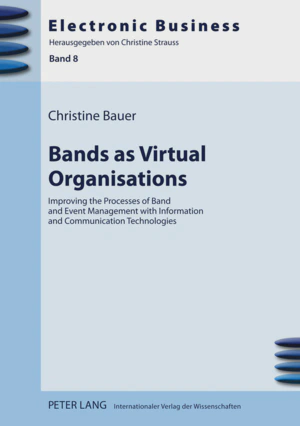Bands as virtual organisations: improving the processes of band and event management with information and communication technologies

Abstract
Managing a big band is a challenge, similar to managing a small or medium- sized enterprise. A type of band particularly difficult to manage is a telephone band that does not have a fixed line-up of musicians. Together, the musicians form a virtual organisation with the bandleader as a focal company. Every participant in the organisation brings in a certain set of skills, has specific business goals, and has to bear some risks. The focal company has to assume full contractual liability to the event organiser. However, bandleaders managing these organisational constructs typically have an artistic background rather than a managerial one. To date, the processes involved in managing bands have not been analysed. It is nearly impossible to improve these processes because processes are not clear. In a competitive environment, members do not seek to share knowledge on processes with their competitors because knowledge on processes is a business asset. However, as virtual organisations, musicians and bandleaders are mutually dependent. Accordingly, knowledge sharing forms the basis for pro- cess improvements, which can only be achieved by joint efforts. Accordingly, this work delivers results in the following areas. First, this investigation targets the activities involved in managing a medium-sized telephone band, made transparent by modelling the processes. Second, this work analyses the resulting models and suggests points for improvement with particular emphasis on the adoption of information and communication technologies. Due to the case study’s explorative nature, using qualitative research methods appears to be the most appropriate alternative in this context. Data is collected through a semi-structured interview and direct participant-observation. Findings are modelled adhering to the UML (Unified Modeling Language) nota- tion for activity diagrams. For deriving implications and suggestions for process improvement, a SWOT (strengths, weaknesses, opportunities, threats) analysis is performed. This study’s major findings include a thorough documentation of processes, making tacit knowledge explicit. Emphasising the use of ICT (information and communication technologies), the findings provide a chronological sequence of activities that may be generalised to band and event management.